The primary goal of the California Recreational Fisheries Survey is to produce, in a timely manner, marine recreational fishery-based data needed to sustainably manage California's marine recreational fishery resources.
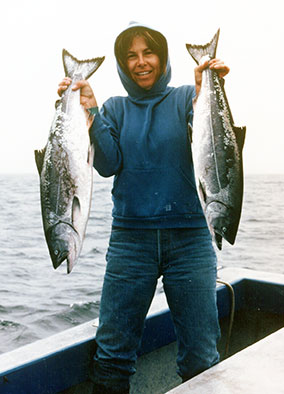 Angler with salmon.
Angler with salmon.
History
Surveys of recreational fisheries tend to be more complex and expensive compared to data collection from the commercial sector. The recreational sector is quite diverse, involves more constituents, and is affected more by weather, the economy, and regional differences than the commercial sector. Recreational anglers can fish from boats, piers, jetties, docks, and beaches and can be widely and irregularly dispersed along the coast. Fishing habits and practices vary among fishing sites. Except for CPFV logbooks which are mandatory, estimates of harvest are difficult to document.
Past surveys to assess the impact by recreational fisheries in California include:
Marine Recreational Fisheries Statistical Survey
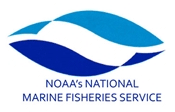 NOAA NMFS logo.
NOAA NMFS logo.
The Marine Recreational Fisheries Statistical Survey (MRFSS) was the main survey used to estimate catch and effort of marine fisheries in California from 1979 to 2003. This survey was conducted by the Pacific States Marine Fisheries Commission with funding from both the federal government (National Oceanic and Atmospheric Administration’s National Marine Fisheries Service) and the state (CDFW). The goal of MRFSS was to produce sample data and catch and effort estimates for use by fisheries managers. MRFSS used complementary (dependent on each other) surveys for catch and effort estimation. A random-digit-dialing household telephone survey was used to obtain participation and effort data, and provide information on the proportion of fishing households in each county of the survey area. In addition to the telephone survey, MRFSS involved a field survey to intercept anglers to obtain information on catch and area fished. The field intercept survey also collected information regarding number of anglers, state or county of residence, length of trip, catch disposition, angler telephone numbers, and other items.
In January 2004, CRFS was implemented and replaced MRFSS. CRFS used MRFSS as a design template, but was adjusted to incorporate necessary changes to provide more reliable recreational fisheries data more quickly and on a finer regional scale.
Ocean Salmon Project
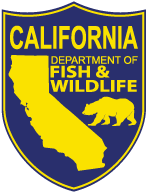 CDFW logo.
CDFW logo.
CDFW's Ocean Salmon Project (OSP) oversees recreational and commercial catch, effort, and coded wire tag estimates for California’s ocean salmon fisheries. Coded wire tag estimates are a key component of salmon management because they identify the contribution of specific runs of salmon to the ocean fishery. OSP conducted a private boat survey from 1962 to 2003.
Since 2004, CRFS has collected recreational data from primary private boat surveys for OSP (the “PR1” mode). CRFS “PR1” survey is designed to maintain the continuity of the historical OSP private boat estimates. PR1 mode samples 20 to 25 percent of days in a given month for daily boat catch and effort to produce the CRFS estimates, and to provide OSP the needed salmon data. CRFS also works with OSP to collect Commercial Passenger Fishing Vessel (CPFV) ocean salmon data, and to track the activities of the CPFVs during the season.
CPFV Logbooks
CPFV operators are required to submit logbooks to CDFW that include documentation of each fishing trip. CPFV logbook data collection began in 1936. For each logbook entry, the vessel operator provides information on effort (number of anglers and number of hours fished) and take (species and number of fish caught). Logbooks are mandatory and must be submitted monthly to CDFW. CRFS uses the CPFV effort data collected by samplers in the field and logbook records to estimate CPFV effort. For more information, see  Two Data Sources for Commercial Passenger Fishing Vessel Catch and Effort Information (2017).
Two Data Sources for Commercial Passenger Fishing Vessel Catch and Effort Information (2017).
CRFS Improvements
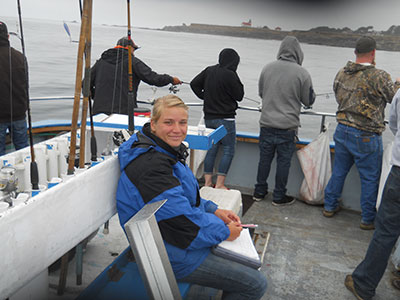 CDFW has incorporated many improvements to the survey over the course of MRFSS (1979-2003) and the early years of CRFS (2004-2010).
CDFW has incorporated many improvements to the survey over the course of MRFSS (1979-2003) and the early years of CRFS (2004-2010).
- CRFS is now a single, integrated, statewide marine recreational finfish sampling program.
- Monthly catch and effort estimates are provided for the four fishing modes (private boats, CPFVs, beaches/banks, and man-made structures)
- CRFS has a finer geographical resolution (6 Districts).
- CRFS has increased sampling levels for private/rental boats and CPFVs.
- CRFS now uses logbooks submitted by vessels skippers, in tandem with a supplemental field survey, to estimate CPFV effort.
- An improved telephone survey (for estimation of beach/bank, private access, and nighttime fishing effort) uses an angler license database instead of randomly calling coastal county households.
- Effort and catch estimation on man-made structures uses instantaneous angler counts, roving effort surveys, and angler interviews.
- The rate of sampling man-made structures, certain private and rental boat sites, and CPFV landings is now proportionate to historical fishing activity at these sites, which leads to greater sampling efficiency.
- CRFS provides sufficient sampling of private/rental boats to meet ocean salmon data management requirements, including collection of coded wire tags in salmon heads
- CRFS collects data on the use of descending devices for rockfish releases, which allows for more accurate mortality rate estimates.
- Field sampling is conducted by CDFW staff rather than by a contractor.
- CDFW now uses a state-of-the-art data system to manage CRFS data. All CRFS data is now entered in-house by CDFW staff without the use of a contractor.
For more information about CRFS improvements, read CDFW Celebrates More Than 10 Years of Improvements to the California Recreational Fisheries Survey (Marine Management News, May 2015)
CRFS Samplers
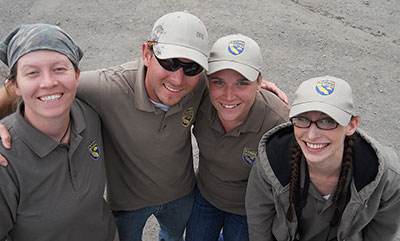 CRFS Samplers.
CRFS Samplers.
Approximately 70 CDFW scientific aids are an essential part of the California Recreational Fisheries Survey. Through interactions with the angling public, they collect the vast majority of the data on effort and catch for all recreational finfish fisheries in California’s marine waters, process and enter data, and perform valuable outreach.
CRFS Samplers Are Dedicated!
Samplers play a vital role in the CRFS since the key to accurate data collection is high-quality interviewing skills and attention to detail. The sampler role is generally filled by CDFW scientific aids, but occasionally CDFW scientific technicians and even environmental scientists may act in this capacity.
A good sampler is one who can easily approach strangers, diplomatically handle sensitive situations, follow procedure, and complete forms with an almost compulsive exactitude. Samplers are expected to act professionally, accurately identify fish species, and communicate effectively.
Due to the unique nature of angler surveys, data collection relies heavily on the angling public and their cooperation. Effective skills used by CRFS samplers to gain anglers' cooperation are:
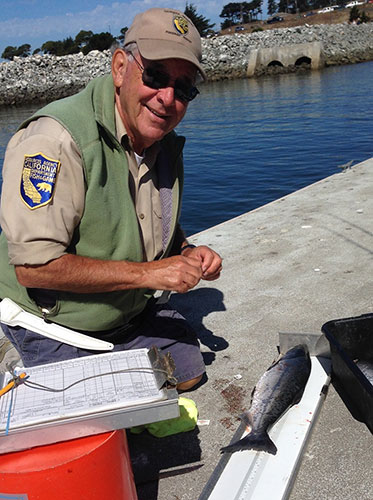 CRFS sampler with a salmon.
CRFS sampler with a salmon.
- Respecting the angler
- Conducting the survey with utmost professionalism
- Effective listening skills
- Ability to relate to the angler
- Ability to convey the importance of the survey and relating the benefits to the angler
Tools for training samplers:
- Standardized sampler manual
- Comprehensive sampler training
- Data quality assurance and quality checks
- Field checks
- Effective communication: monthly meetings and CRFS staff newsletter
Stories from the Field
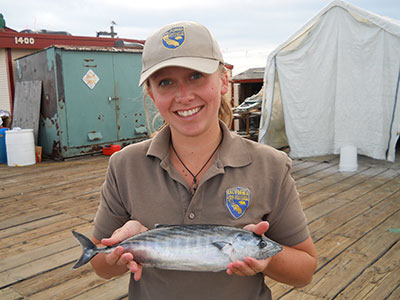 CRFS Sampler
CRFS Sampler